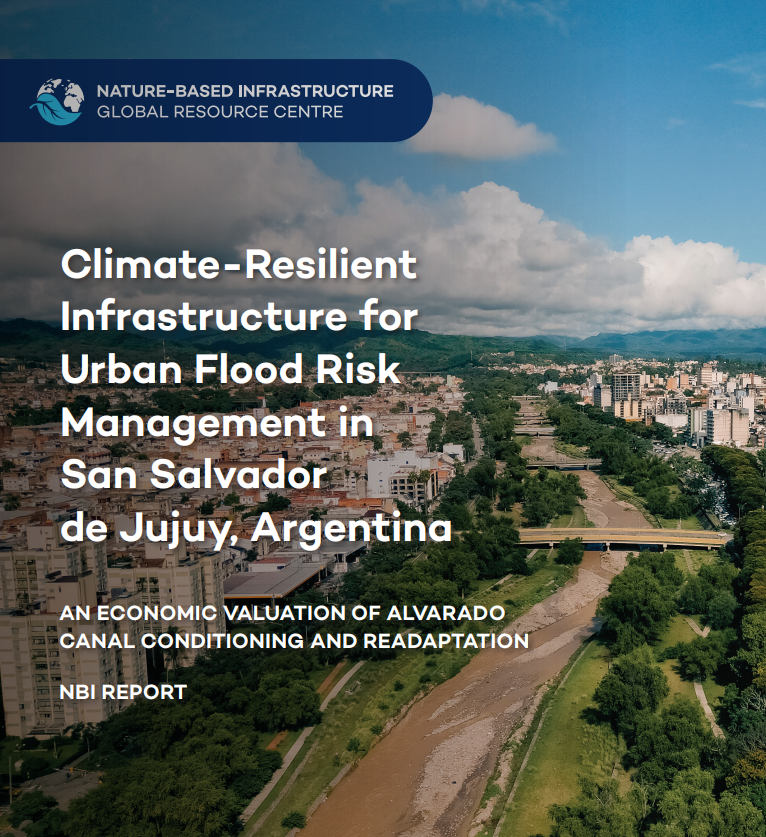© 2020-2022 The Global Program for Nature-Based Solutions for Climate Resilience. All Rights Reserved.
Climate-Resilient Infrastructure for Urban Flood Risk Management in San Salvador de Jujuy, Argentina
San Salvador de Jujuy, located in northwest Argentina, is the capital of Jujuy province. The city experiences recurrent flooding due to insufficient stormwater infrastructure, particularly in the San Pedrito neighbourhood, which is exacerbated by extreme rainfall caused by climate change. The Alvarado Canal, the primary drainage channel in San Pedrito, is in a deteriorated state and obstructed by solid waste, amplifying flooding challenges and posing health hazards to residents.
In response to these issues, the Municipalidad de San Salvador de Jujuy is collaborating with Ministerio de Obras Públicas de Argentina and the World Bank to implement an integrated project focused on restoring the Alvarado Canal. Through reconstructing the canal, upgrading stormwater infrastructure, increasing green areas, and enhancing urban amenities, the project seeks to reduce flood risk and enhance the safety, mobility, and wellbeing of approximately 26,000 residents in San Pedrito.
We assessed three scenarios:
- Grey infrastructure, consisting of reconstructing the concrete lined canal and secondary drainage systems;
- Nature-Based Infrastructure, consisting of a wider grass-lined canal, storm drainage systems to control runoff, rain gardens, permeable pavements, reforestation and three additional recreation spaces with runoff retention.
- Hybrid infrastructure, combining the grey scenario with a series of NBI interventions including rain gardens, permeable pavements, reforestation, and a park along the canal incorporating pedestrian and cycle lanes.
Overall, our assessment found that the NBI and hybrid options could generate between USD 940,000 and USD 3.7 million in net benefits for a variety of stakeholders including residents, businesses, and the municipality, such as avoided flood damages and improved liveability. The NBI and hybrid solutions also outperform the grey infrastructure which, despite its lower construction cost and due to its smaller impact on income and liveability, does not result in a positive net benefit.



